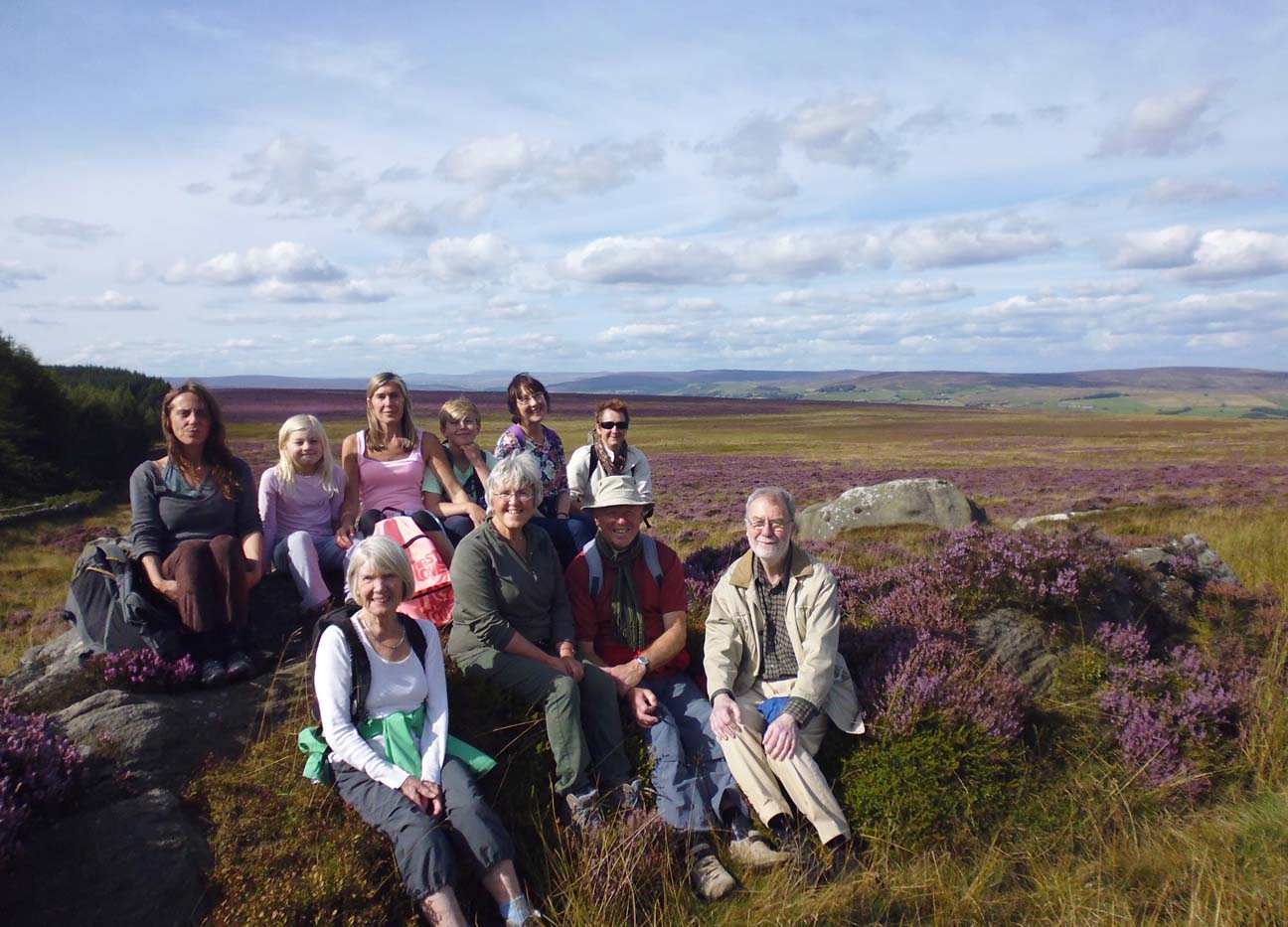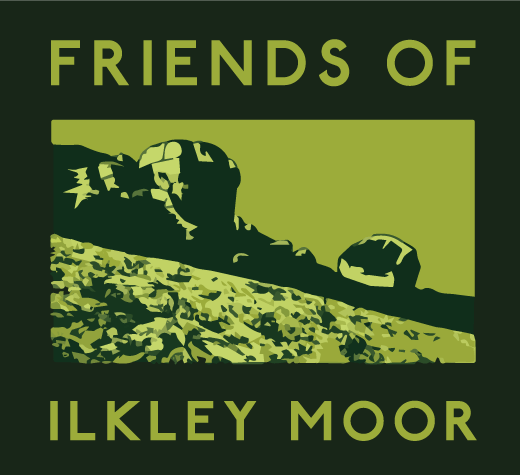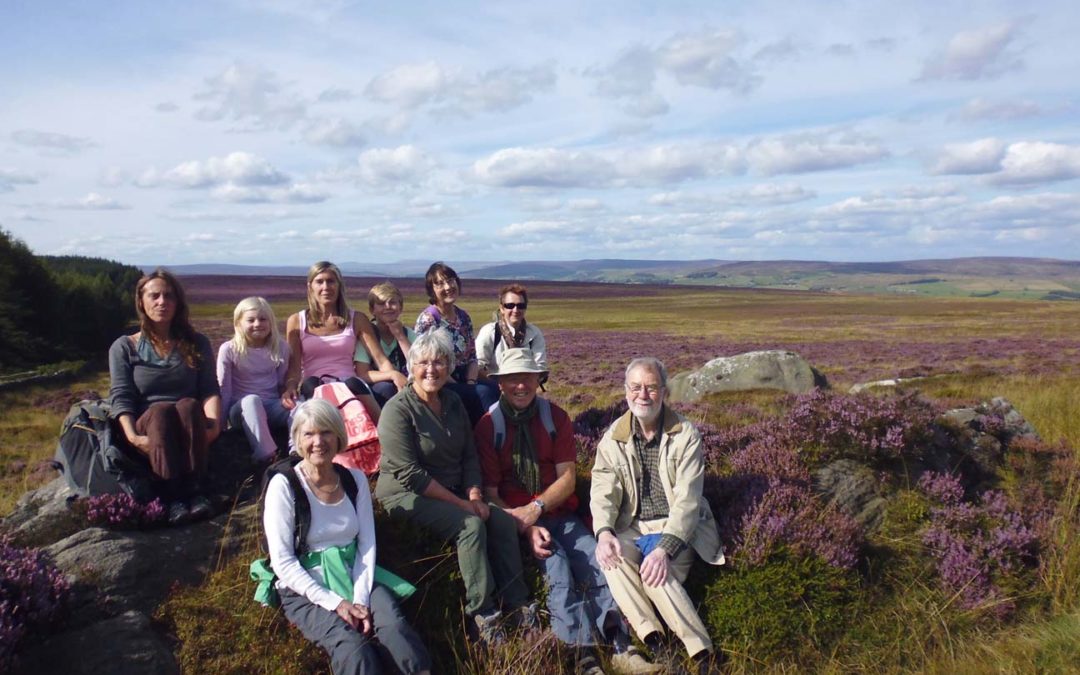
From the dry heath of purple flowering heather, the group walked across Crawshaw Moss and here it was shown the contrast in the land and plants. Here was found wet bog peatland of sphagnum moss, sedges and open water pools, glistening in the sun.
A short talk from the FoIM Project Officer informed the group of the importance of these peatland habitats in climatic regulation and storing water in the uplands. Sphagnum moss acts like a sponge and can stay wet long after any surrounding soil has dried out. It can soak up more than eight times its own weight in water. This holds water in the uplands which would otherwise flow downwards, increasing flooding in the lowlands.
Peat bogs have a living surface which is created by a mass of sphagnum mosses floating on dead, water soaked material which may be several metres deep. They are home to a unique and beautiful wildlife. Conservation issues were also discussed. People were amazed to learn that during World War 2, on Friday afternoons, school children whose schools were close to these habitats, spent the afternoon collecting Sphagnum Moss. It was dried and sent off to army medical camps. It was applied to soldiers’ wounds because of its great absorbent and antiseptic properties which helped them heal.
Details of future events can be downloaded from the Friends website www.ilkleymoor.org or collected from Ilkley Information Office and cafes and shops in the Town.
From Barry Wilkinson FOIM Press Officer 07831-505051. For more information contact Tracy Gray FOIM Project Officer 07854-447947

